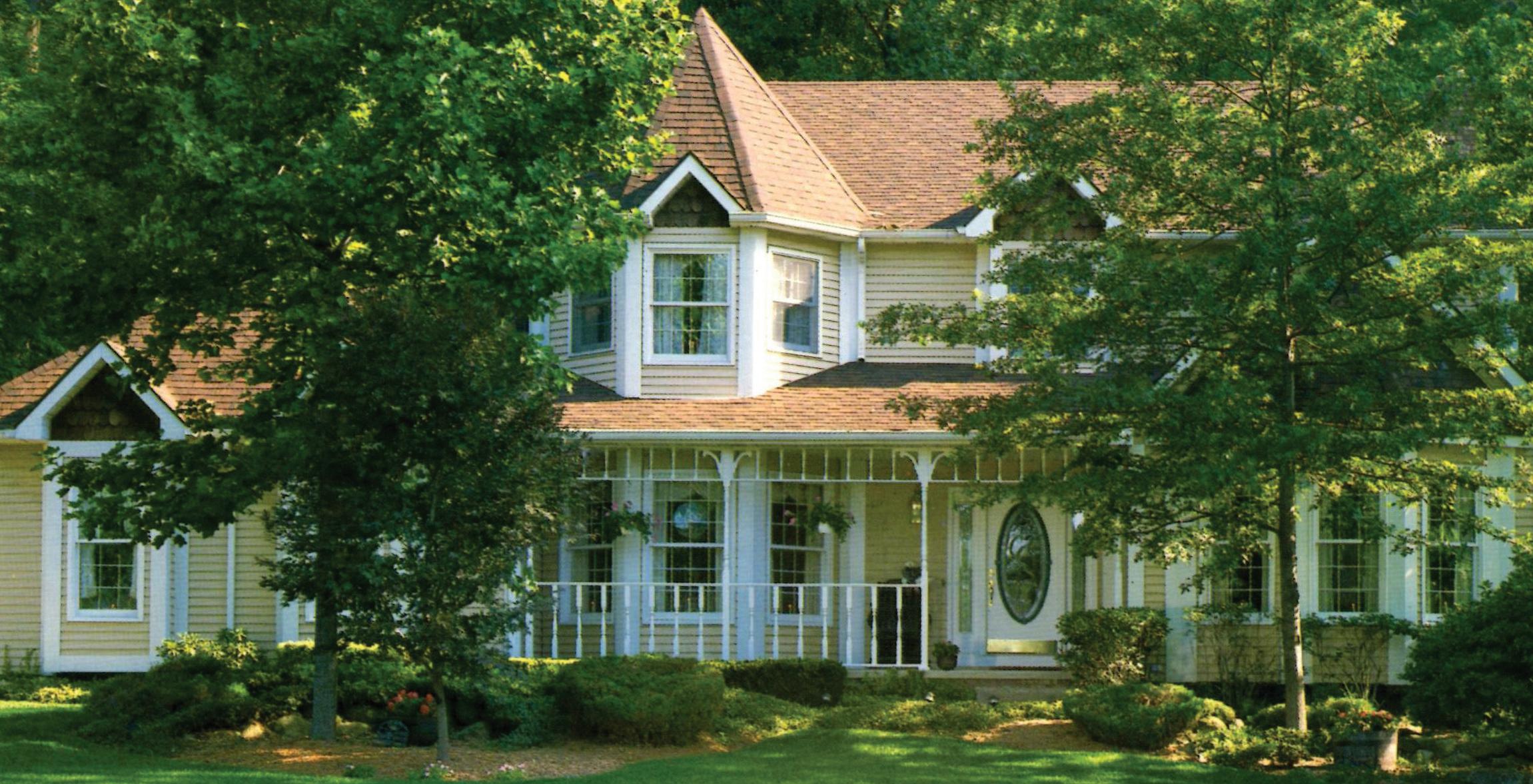
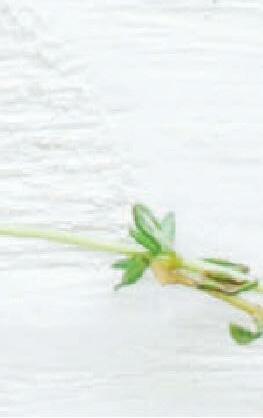





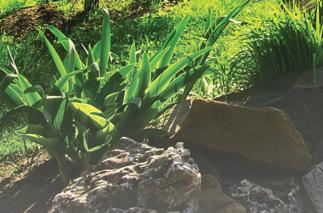







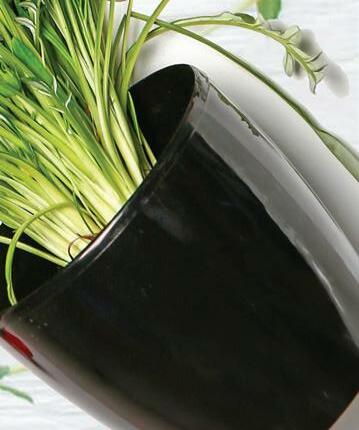










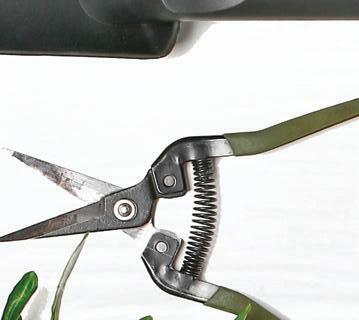

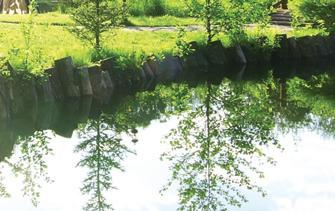
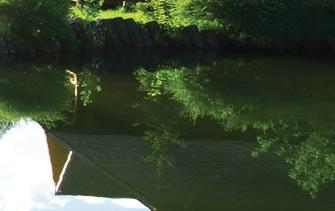








































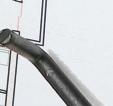

















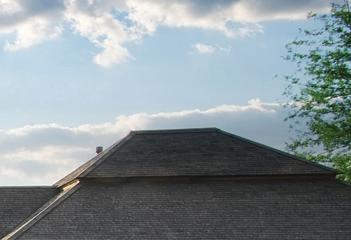











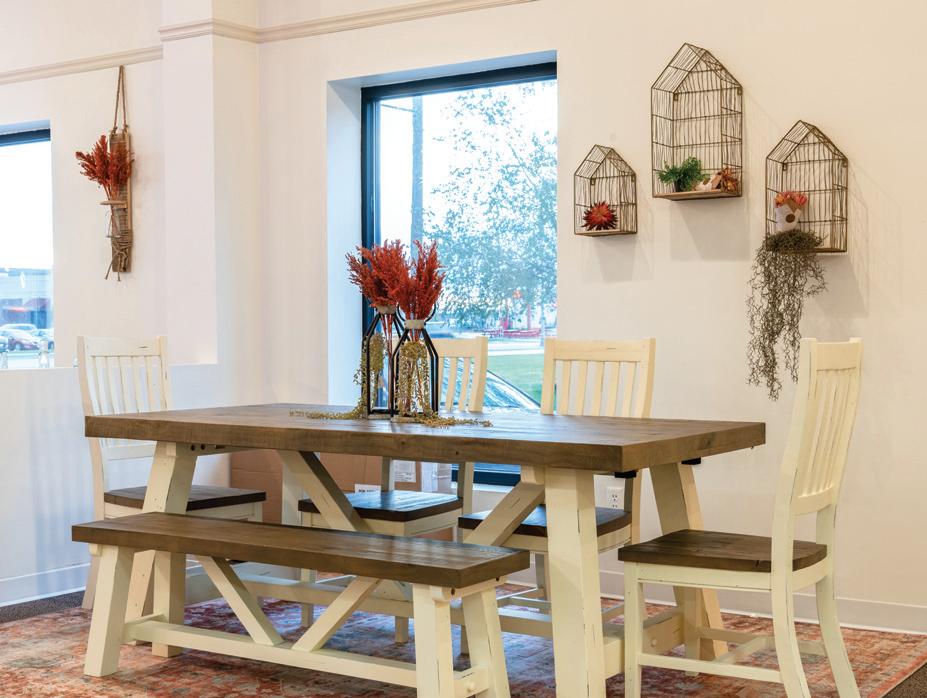














































































































With the new RANGER SP 570 lineup, you don’t have to make a trade-off between work and fun. When there’s work to be done, it makes hauling and towing fast and easy thanks to class-leading capability. When it’s time for fun, it offers maximum comfort, plus tight spaces are no problem and handling’s a breeze.
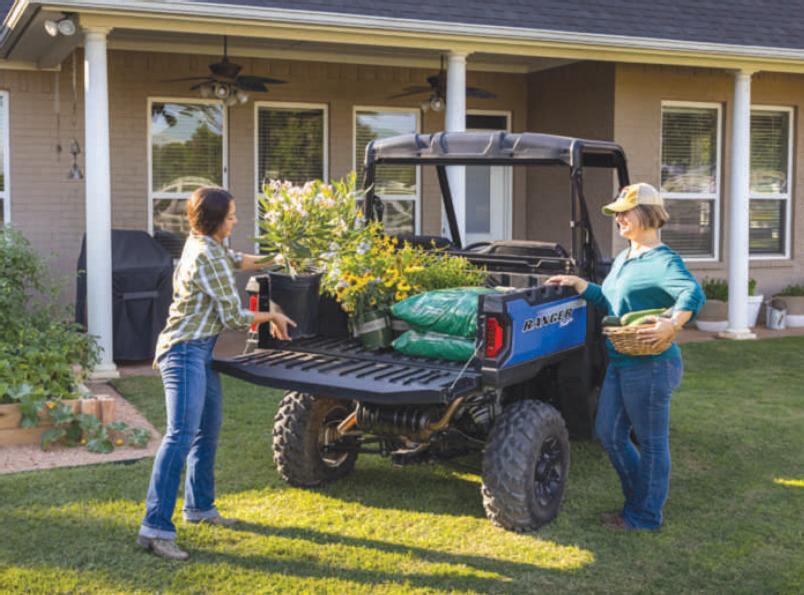
• Con dently haul more with class-leading power and towing

• Smooth ride and handling while on the trails


• Spacious interior with massive and easy to use cargo box
• Ride over rough terrain with 11" ground clearance


• Nimble around corners and tight spaces










































 BY SARAH COLBURN STAFF WRITER
BY SARAH COLBURN STAFF WRITER

Once an after-thought as homes were built, the garage door has become an architectural focal point of the home – often taking up at least one-third of the front of the house.


“As garage doors continue to evolve, there are a lot more options available to people as to what the doors are made out of, the insulation value, the curb appeal of the doors,” said Nate Brown, sales manager for American Door Works.

In the last five years, the company has seen an


uptick not only in new construction homes, but in clients who want to

refresh the look of their 1990s/2000-builds with new siding, windows


and garage doors. Fifteen to 20 years ago, there wasn’t much
variety on the market
Garage doors page 6
from page 5


when it came to doors; people often had to choose from three colors of raised-panels. Now, in an era where homeowners have begun to treat their garage as an extension of their home, sometimes using it as additional relaxation space or entertaining space, improved garage doors have become part of that trend.
Nearly all the garage doors on the market today are made of steel, he said. Gone are the days of fiberglass doors. Today’s shoppers can choose from carriage-style doors, those with windows that are insulated or uninsulated and they come in a


multitude of colors and looks. While a small percentage of people may opt for a true wooden garage door, homeowners are much more likely to choose a stamped steel door finished to look like wood, or what’s called an overlay door, which is a steel door with a layer of composite on the outside, finished with a wood-like grain.

The composite and steel doors, Brown said, require almost no maintenance while a true wood door not only weighs much more, it has to be maintained and re-stained every few years.



While not every style of door fits every style of home, experts can help homeowners create the perfect look. Many manufacturers offer online tools to upload a photo of a home





and play around with the stylings. While today’s doors are often available in up to 10 color options, steel doors can be painted after the fact to match the house, which is usually done by a professional. While the manufacturer’s color is under warranty, paint applied to the doors is not. In cases where the garage door is in direct sun exposure for most of the day, it’s best to stick with the manufacturer colors for longevity, Brown suggested.
As important as the style of door is the function of the door and the customer’s needs when it comes to insulation.


The use of the garage space often dictates the most appropriate garage door product. For those looking for a heated
Garage doors page 7

from page 6
shop space, or those using the space as a hangout area, insulation and the gauge of the door are important.


Doors can be insulated with Polystyrene or Polyurethane. The Polystyrene, Brown said, is more an entry-level option for an insulated door. There’s a steel exterior and, on the inside of the door, polystyrene panels covered by a vinyl or steel backing to hold them in place. Vinyl is less costly while steel is more of an upgrade and makes the door sturdier and quieter.
Polyurethane insulation is blown in between the layers of steel at the manufacturer and





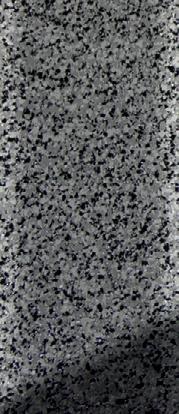
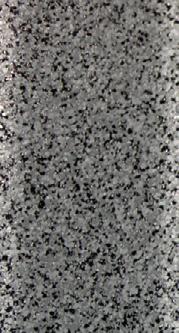








Without proper maintenance, garage doors can simply stop working. This door has a broken cable, one of the most common repair needs. Regular garage door inspections and maintenance can prevent cable breakage, which can cause other damage.
fills in any and all gaps between the two panels. Polyurethane-insulated doors have a higher R-value and a higher price point. If a customer is heating their garage to 55 or 60 degrees regularly, the extra cost for a polyurethane door is worth it, Brown said.
Residential garage doors, depending on the type of insulation and materials used, can range from an R-value of six to an R-value of 25. Adding windows to the door can lower that R-value or, with insulated windows, keep the R-value roughly the same.
The gauge of steel used to craft the door is also something to consider.
“The lower the gauge of steel, the better the quality,” Brown said.
Lower-gauge steel provides for a sturdier, quieter door that is less likely to dent and scratch. Most of the



doors Brown’s company sells are steelbacked and are typically 26-gauge steel. For vinyl-backed or uninsulated doors, the company uses 24- or 25-gauge steel to provide extra sturdiness. Most doors available in retail stores are 27-gauge steel, he said.

Along with the lower-gauge panels, there can also be a difference in quality of the components including rollers and hinges.
When it comes to installation of the garage doors, that is best left to the professionals. Garage doors are installed with torsion or extension springs and both have an extreme amount of load on them and are extremely dangerous. Most often, Brown
Garage doors page 8

from page 7
said, newer installations are done with the safer torsion springs which are placed above the inside of the garage door, but there are instances in older garages where there’s not enough ceiling clearance to fit the torsion spring. In those cases, extension springs are still required. Those springs run alongside the track instead of above the door. There are varied track configuration options available with today’s garage doors that provide a cleaner look on the inside. Additionally, some customers choose to add a screen door option to their door to enjoy the
breeze without the bugs on summer nights.



Regardless of the options with today’s garage doors, maintenance is a necessary part of owning a door. And, Brown said, it’s something people often ignore until the door breaks.



He recommends having the door inspected by a professional at least annually. They’ll
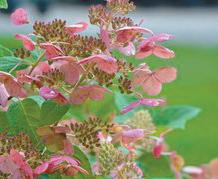

apply a lubricant to the moving mechanisms on the door, the rollers inside the track as well as the spring. Additionally, the cables need to be inspected for fraying. It’s best to replace cables before they break, because the snapping of a cable isn’t only dangerous, it can damage other components of the door.
Springs are more

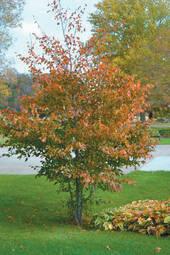

difficult to inspect because they don’t show the wear. Typically, most springs are good for 10,000 movements of the door. If a garage door is being replaced, the springs should be replaced along with it. Garage door openers are another place homeowners can make improvements. Today’s garage door openers are more technological-
ly advanced, smoother and quieter than their predecessors. All of the openers the company sells are Wi-fi enabled so homeowners can control and monitor their garage doors with their phone. Higher-end models are available with LED lights for those using their space as a shop, battery backups and built-in cameras.

















from page 10

hard to find.

“Most of the time, if it’s a Minnesota-native plant, it will say it on the tag – it will brag about it on the tag,” he said. “It’s pretty easy to find native plant information.”
As Hjelm talks about native plants, he also explains their importance to the environment and the ecosystem.
Native plants hold the soil and take up nutrients. Unlike turf grass, they’re low maintenance, they don’t require fertilizers or weed control and, once established, are easy to maintain.



“They have an amazing root system,” Hjelm said.
While the drought of last summer burned up lawns across the Midwest, the native plants found in the road ditches and gardens didn’t stop putting on a colorful show.
Oftentimes, the root sys-





tems of native plants will go down 6 feet where there is still moisture, he said. Some of the really big prairie plants, including native sunflowers, may have roots that grow as deep as 20 feet.
Deep roots can capture fertilizers and other chemicals applied to the ground, before they impact the drinking water, or enter lakes and rivers. The roots can help break up soil so it’s not so compacted. The deep roots can help with drainage and prevent flooding or erosion on a riverbank or lakeshore.
The plants take a few years to get established.
“In the first year or two, they are putting most of their energy into roots so you don’t get as much on top,” Hjelm said. “After the third year, there really isn’t any maintenance.”
Hjelm taught a series of online classes last fall that ranged from how to build a living fence line to the importance of Minnesota Milkweed and another on the importance of
cover. He has more planned for the future.
“Those have been wildly popular,” he said.
In the schools, he teaches kids about the importance of native plants to the life cycle of the wild. Monarchs, bees and
Native plants page 12

This fairly aggressive Woodland Sunflower grows to



Lambda - cyhalothrin
Controls over 130 different insect pests on vegetables, fruit, roses, owers, lawns, shrubs, trees, and over 60 varieties of ornamentals. No odor, water based. Not for sale in AK.





Prevents crabgrass and other grassy weeds for up to 5 months. Contains premium, turf grade, slow release fertilizer and non-staining iron for deep greening.

Kills dandelions and other broadleaf weeds on contact. Contains premium, turf grade, slow release fertilizer and non-staining iron for deep greening.




Spinosad 0.005% plus Potassium Salts of Fatty Acids 1.94%
Fast acting patented formula for organic gardening to kill over 30 insects and mites on vegetables, fruit, nuts, berries, herbs, container grown plants, greenhouse plants and ornamentals. Also kills powdery mildew.













hummingbirds are all attracted to native plant species, he said.




The kids make seed bombs as he talks about the life cycle of a monarch and why milkweed is so important. In almost every school, he takes the kids outside and lets them get their hands dirty planting. He talks about invasive species and weeds and helps them identify and plant native varieties. They work together to build rain gardens and pollinator gardens and they convert chunks of lawn or stormwater ponds to native landscape through the work of the Sauk River Watershed District. The district has worked to improve shorelines and maintain the health of native prairie landscapes.
“It’s about the partnership and the evolution, the plants and animals and insects evolved together,” he said.









Native plants page 13

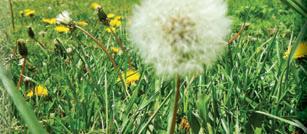


“The fall-blooming plants bloom specifically for the birds and the bees and the butterflies that are migrating; they give them the energy to go on to their next leg.”


Overall, Hjelm said, the goal of the district is to spread as much information as possible about the importance of native landscapes. They work to get into schools and offer community classes to share information about how to help the earth.



For those new to the idea, there are lots of resources. To get started, he encourages gardeners and land owners alike to look at their sites and determine what type of native plantings may work in the space.










The biggest factors to consider when choosing the right plants are the amount of sun, the amount of moisture in the soil and the soil type.
“Those really dictate the plants or help you choose a group of plants and then you can pick from there,” he said.















Planning out the bloom times is also important to creating the perfect landscape. Some plants bloom in spring while others bloom in summer or fall. Choosing a mix will provide color and benefits throughout the growing season.



No matter the style of garden a person desires, there are likely native plants to fit the look and the space.




“Some people like the wild, wooly look of the native prairie and let it all go and it looks great,” he said. “Other people need to know where everything is, growing things in mounds – there are happy little clumpers and some that spread like crazy. Coneflowers [for example,] spread as a clump but you can maintain them and keep them orderly, keep them showier and keep your garden the way you want it to look.”































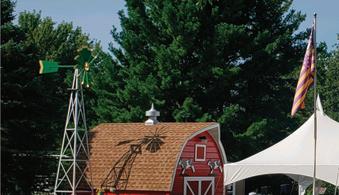


































































 BY SARAH COLBURN | STAFF WRITER
BY SARAH COLBURN | STAFF WRITER



As boxelder bugs emerge from hiding in the toasty warm walls of homes across Minnesota, homeowners are reminded that spring brings with it the emergence of not only boxelders, but other life including June bugs, slugs and the ever-invasive Japanese beetle.



The number of flying nuisances and wriggly, creepy crawlies will determine the type of treatment needed, if any, according to Katie Drewitz, local Extension educator in Stearns, Benton and Morrison counties.


While boxelder bugs make their presence most known this time of year, the boxelders crawling out of hiding and stretching their wings haven’t been laying eggs in your walls – they’ve been hibernating in balls or clusters since last year.

The best defense against these pests this time of year, according to Drewitz, is a vacuum!

“As the temperatures warm, the insects in the outer layers become active first and then emerge into the living quarters of the home, explaining why they do not all become active at the
same time,” she said. “Since these insects are emerging from hidden sites, it is not practical to treat them to prevent their emergence.”

Though boxelders feed on the sap of their host plants including boxelder, maple and ash trees, their work doesn’t often impact the health of the plant.
The number of boxelder bugs in Central Minnesota last year was significantly higher, because of the dry July weather which was ideal to their lifecycle.
To minimize the problem in the future, it’s important to in-







Bugs page 18

from page 17

spect the outside of the home during the summer and seal any spaces or gaps that could be allowing the insects inside. An insecticide can be applied around the perimeter of the home in the fall, if necessary, as the insects try to get in.





While boxelder bugs are annoying, Japanese Beetles with their distinct metallic green head and thorax and copper brown wing covers, are destructive.
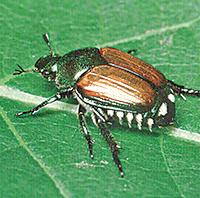
The beetles, Drewitz said, have been in the state since 1968 but are becoming more prevalent. They’re not only easy to spot because they range in size from 1/3 to 1/2 inch; the skeleton plant carcasses they leave behind are distinct. The beetles feed on more than
300 different species of plants including turf, fruits and vegetables, trees and shrubs, flowers and field crops. While healthy and mature plants may survive the

beetles
feasting, young or unhealthy trees and most fruits, vegetables and herbs that suffer significant damage may not survive.

For valuable plants, exclusion netting can help. As the beetles feed on a plant, they release a hormone that
attracts more beetles, Drewitz said. Hand-picking beetles can help reduce the overall number.


Drewitz advises against using commercial “traps” sold
Bugs page 19

from page 18

in stores.
“While the traps do capture a large number of beetles, they will attract a greater number than they trap,” she said. “In the end, traps cause more harm than good.”

For those property owners dealing with an overwhelming number of beetles, she said chemical controls are possible depending on the plants they’re feasting on and the size of those plants. More specifics can be found at: https://extension.umn.edu/ yard-and-garden-insects/japanese-beetles.


The flying, plant-eating beetles begin in the ground as larvae that feed on the root systems of grass or turf. In the soil, they appear as white grubs.
The adult beetles emerge in late June and lay eggs in the turf during July.
“The eggs hatch in two to three weeks and tiny white grub larvae begin to eat the grass roots,” Drewitz said. “The grubs grow rapidly and are fully grown by late August or September.”

The feeding on the root system causes the grass to wilt and fade. If extreme grub populations are present (10 or more white grubs per foot), they will cause the grass to die. The damage is usually most apparent from mid-August on and can be localized in specific spots.

At first glance, the grass may appear stressed from drought with a gray-green discoloration. In places with the most severe damage, the grass can be rolled back like a “loose carpet.”






Though grubs may go unnoticed by humans, racoons, skunks and crows will find them and often tear up a yard as they peck out their prey.
Because adult beetles emerge in late June and lay eggs in July and the larvae
are fully grown by fall, the first chance to break the cycle is from late May to early August. A preventative insecticide can be applied and watered in. After mid-August and in the springtime when the grubs are fully grown, preventative insecticides are not effective. From August on, a fast-acting, short-lived curative insecticide can be applied to reduce the number of white grubs, but it’s not as effective as a preventative.
Slugs
Springtime can also mean the re-emergence of slugs.
These slimy creatures like cool, damp and shaded places and feed on a variety of plants.
To get these under control, Drewitz recommends hand-treating them. “Consider altering the garden environment by removing the over-wintering leaf mulch, and pruning some plants to create more sun and air movement,” she said.

Bugs from page 19


Additionally, watering plants in the morning helps the area dry out before slugs become most active at night.


She also recommends plantings that slugs don’t like as much:

For full shade (6+ hours of shade):



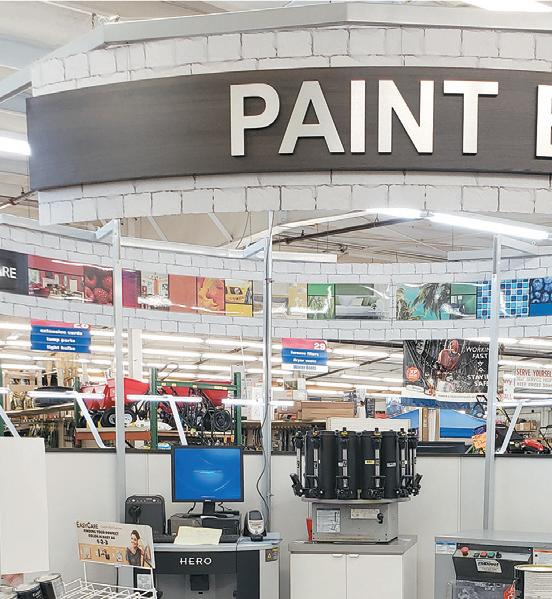
Perennials: Creeping phlox (Phlox stolonifera), Woodland Phlox (Phlox divaricata), Bleeding Heart (Dicentra)



Ferns
Ornamental grasses: Tufted Hairgrass (Deschampsia), Hakone Grass (Hakonechloa)

Sedges: Grey’s Sedge (Carex grayi), Pennsylvania Sedge (C. pensylvanica), Japanese Sedge (C. morrowii), Plantain Sedge (C. plantaginea)
For light to part shade (3-4 hrs, dappled sunlight):




Perennials: Monkshood (Aconitum), Lady’s Mantle (Alchemilla), Columbine (Aquilegia), Swamp Milkweed (Ascelpias incarnate), False Spirea (Astilbe), Turtlehead (Chelone), Bugbane / Snakeroot (Actaea), Pinks (Dianthus), Spurge (Euphorbia), Cranesbill (Geranium), Coral Bells (Heuchera), Catmint (Nepeta), Evening Primrose / Sundrops (Oenothera), Spiderwort (Tradescantia)
Ornamental Grasses: Oatgrass (Helictotrichon), Reedgrass (Calamagrostis), Blue Fescue (Festuca glauca)
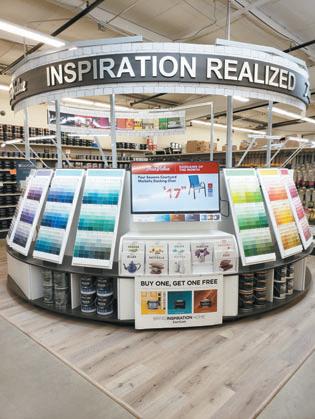
Sedges: Blue Sedge (Carex flacca), Palm Sedge (Carex muskingumensis)
Clematis: Grow this flowering vine on a trellis or fence in full sun, but with the base of the plant shaded and cool.

More information on slugs can be found here: https://extension.umn.edu/yard-and-garden-insects/slugs.









































































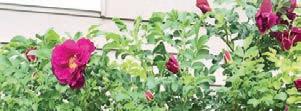

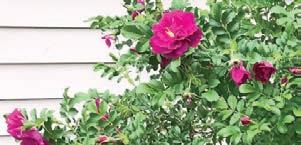

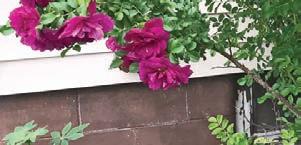
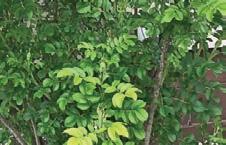
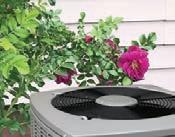














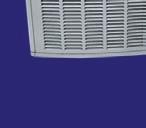




























































“I like to let the architecture of the home speak,” she said. “I like the history even with all its imperfections.”
ages people to think about the long-term and how the space can flex over time with the people living there.
BY SARAH COLBURN STAFF WRITER





ALEXANDRIA
– Tracy Anderson of Tracy Anderson Design works with clients to remodel and update their spaces.

Anderson is an expert at adding texture and vibrancy to a space, paying special attention to high-quality additions that will age gracefully.


No matter the style of home, she encour-






“I like to keep the big things pretty neutral,” she said. “Neutral sounds so boring but you can bring in trends and colors into accent chairs, light fixtures and window treatments. A beautiful wood floor or travertine floor is something that’s timeless. Picking quality finishes and surrounding it with the fun, that way it lasts.”
Big windows and natural light, she said, never go out of style.
She also focuses on texture and layering when finishing out a space.



This accent wall helps tie together the look of a coffered ceiling on this level of a home. This wall brings interest and a bit of texture to the space.
“It’s just texture over and over if it’s a light palette then






























use that herringbone backsplash, two-tone cabinetry, wood and painted mix so there’s something for the eye to be interested in as
you go around. Even if it’s a soft contrast, there’s contrast there.” As she works, she tries to carry a theme through a space. If she



begins with unique architecture on a front door, she tries to tie it into an armoire in a room or another furniture piece of the same style or color. She may add a cove or cabinetry to an area to bring in something new to the space and provide a different functional element.
She often adds history to a space, maybe by using a gorgeous
reclaimed door for the pantry in the kitchen and then bringing that element to the look of a light fixture in the dining room.
“Bringing that around and tying it together color-wise, bringing in that history, then accent tables and lamps continue the story of ‘there’s age here,’ but yet it’s brand new –a copper hood doesn’t hurt either,” she said.

She may suggest a facelift for a fireplace, adding stone and then tying it into the front entry by adding texture on the entryway floor; it may be a different pattern but the two spaces play off one another.


“You have to connect your spaces – the wood, the color, the natural elements that tie it all together,” she said.
While a traditional coffered ceiling is deep and typically done in a room with tall ceilings, this modified version hides the eye from a crooked ceiling. To tie the look together are architectural elements on a large wall in the dining room and an accent wall.

Part of her job as a designer is to not only meld a look throughout a space or home, it’s to marry together the ideas of different members of a household.
She works with clients to understand their specific styles, opinions and wants and then
combines the styles to create spaces that work for everyone.
“It’s an art to putting a home together
Anderson page 26

from page 25

beautifully,” she said. “All the wonderful HGTV shows that people watch, it doesn’t really happen that way.”

She does encourage her clients to start with Pinterest, creating files that appeal to them. Then, she does a lot of homework and research. If one partner opts for more modern stylings and the other wants shiplap, she works to mesh those ideas together. She may add texture to the space in the form of blankets and pillows and a wood floor, but placed in a herringbone pattern so one gets a little texture and one gets more of a modernism.
“It’s about finding the different applications to bring that in,” she said. “It may be a brick front entry floor that transitions to a board and batten wall.”






Even traditional ele-

















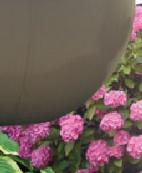



To give this basement space architectural elements, designer

and interest to the eye.
ments like board and batten can have more updated applications; placing a modern version of a coffered ceiling and tying it in with a complementary accent wall can provide an expensive feel and withstand the passing of
time. The width and how the treatment is applied to the wall, floor-to-ceiling or at chair-rail height, will impact the look of the overall space.


The key, she said, is adding architectural elements but putting in just the right
amount of texture.


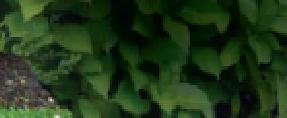




“You don’t want to see it everywhere you look or you’ve overdone it and it will feel trendy,” she said. Anderson page 27

from page 26
As Anderson works with clients, she asks them about their overall long-term vision for the house – and their budget.
“That’s going to drive everything,” she said. “Right now, costs are so high so we’re putting together projects in phases.”
The first phase may be the kitchen because that’s where people gather, but homeowners need to envision the full plan and how the space is going to look when the entire project is complete. If moving from a honey oak to new cabinets and flooring, the instant that’s up, everything else will look much more dated. So, beginning a project with the end in mind is important.

When it comes to planning for the end result, she encourages homeowners to
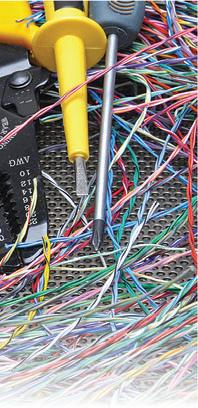




think about how the space may grow with the family.
It’s easy to think about a bedroom or two for kids, but it’s another thing to think about adding a full bath or a laundry room on the main floor to accommodate people

growing older in the house. There are opportunities to open up a wall and make new spaces but that has to be part of the plan early on.
“Everything always evolves,” she said. “I love the history of old homes and
taking what were old, small spaces and creating them to be the new, open concept in a way. Creating that texture and saving that home and saving that character, I love that.”












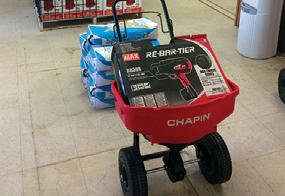




















































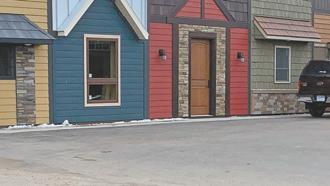

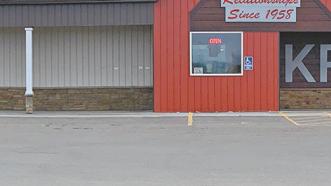



















We are thrilled to introduce ourselves: Uphus Sod & Landscaping, previously Spaeth Sod & Landscaping, is in business and prepared to service all your needs. We are a family owned business with a combined 20+ years of experience in customer service. We are confident that you will find the same high quality products and service you have experienced in the past. We look forward to serving you!















 BY SARAH COLBURN | STAFF WRITER
BY SARAH COLBURN | STAFF WRITER









COLD SPRING – Every April, Sandy Hansen goes down to the fruit cellar to retrieve her labeled cardboard box filled with peat moss. Sitting amongst the moss are some of her favorite things in the world, dahlia bulbs. She plants the bulbs indoors in pots at the beginning of April and, as soon as the frost clears, she plants them outside. Come June, her yard is brimming with color –deep orange and yellow combinations that she said “are as cute as can be,” multiple shades of pink that deepen in the middle, and even a dark burgundy.
Dahlias page 31
PHOTO SUMITTED


Sandy Hanson tends to her dahlias at her home in Cold Spring. Hansen is a Stearns County Master Gardener who enjoys caring for the tender bulbs, keeping them over winter and replanting them each spring.





























continue their colorful shows.
The taller varieties need to be staked as they grow. Her 6-foot variety spreads to around 20 inches and a heavy rain or strong wind will knock down the blooms if she doesn’t keep them tied up. During the course of the summer, she checks on them a few times as they continue to grow, tying up the shorter stalks as they get taller.
“When they’re at their full height, it doesn’t take much to knock them down, but
I think they’re worth it,” she said.
Hansen started her dahlia kick after going on some garden tours and realizing how many different varieties and colors are available. The tours, her retirement, and her love of gardening sparked her to become a University of Minnesota Master Gardener four years ago.
“I retired and it was always one of my goals to get involved more with gardening,” she said.
She met a master gardener at the gym, researched the group al flower beds. Then, she’ll start giving them away.



The University of Minnesota Extension offers tips and tricks for getting the best results from your dahlia bulbs. The following information comes from the extension service:


* Tender bulbs, including dahlias, begonias and gladiolas, are planted in the spring for summer bloom. Tender bulbs have fleshy bulbs, corms, tubers or roots.
*Bulbs can be planted after the soil has warmed.
* Check bulbs for signs of disease or damage, such as cuts and bruises; bulbs should be firm and have a protective papery skin. Do not purchase bulbs that are soft or moldy.
and joined. She’s learned a lot about how to care for dahlias and has gained more in-depth knowledge about their varieties. The blooms are naturally bug resistant and don’t need to be sprayed for aphids or other pests. While Hansen loves her dahlias, she’s running out of space at her current house and said she’ll probably only plant a few more with her annuals and other perenni-
* Bulbs need warmth and bright light to trigger their growth; choose locations sheltered from winds and avoid planting in low areas where frost can collect.
* Soil near building foundations, with a southern or western exposure, may warm up earlier than other areas, causing bulbs to flower earlier. Early bloomers may suffer cold damage; mulching soil in these areas can help the soil to warm more gradually so bulbs bloom at the right time.

* The more light bulbs receive, the more energy they generate and the more likely they are to bloom the next year.



“The plants themselves are bushy and just plain nice and full





and happy,” she said. “The taller ones get a little more dangly, but the colors are so beautiful.”








































AVON – When Trudi Hoppe moved into her Avon home, she knew she was in for lots of renovations.
“It was in really rough shape when we got it; we’ve done many, many things to it over the years,” she said.

She and her husband, Peter Brang, live in the house with three teenagers. Her oldest is 22 and has moved out.
They replaced the windows themselves, added air conditioning and replaced the baseboard heat with a furnace, put on new siding
and facia, renovated the fireplace, the kitchen cabinets and the island. They ripped out the old wooden-style screen porch facing the lake and replaced it with a maintenance-free product that touts aluminum framing.

It’s been a multi-year undertaking after Hoppe purchased the 1960s home in the fall of 2013. It sits just off Upper Spunk Lake and the porch overlooks the waterfront, just a gentle slope to

Facelift page 39

The new sunporch features abundant windows and is heated with a propane fireplace on a winter’s day. In summer, the floor-to-ceiling windows can be completely opened for airflow through the screens.














































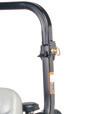





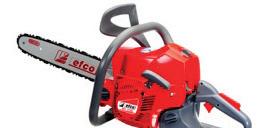























































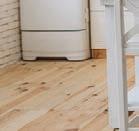




from page 39




area and sits in one of the home’s two living rooms. As they began tearing down the damaged chimney, they found cement block underneath the brick façade. They updated the wood-burning fireplace to a natural gas one, brought the fireplace up to code, replaced the gas line outside and changed the look of what once was a light-colored chimney to blacks and grays.
Along with the work on the inside to replace the fireplace, came a focus on the kitchen.
Trudi’s sister works for CM Woodworks Inc. so she called the company to




The updated kitchen now features a number of drawers instead of stationary shelves, and other features for better organization. The large island provides a gathering space for the family while the new backsplash, countertops, sink, light fixtures and under-cabinet lighting finish the look.
begin looking at kitchen options. Her existing cabinets were so old she’d arise in the morning to find shreds


of cabinetry in her cups and bowls. She opted for rustic elder cabinets, an improved Lazy Susan

and a larger rolling island. The overhead peak of the kitchen, original to the home, features a wood beam
that creates atmosphere and draws people into the space.
Facelift page 43




























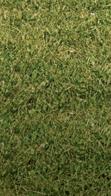





























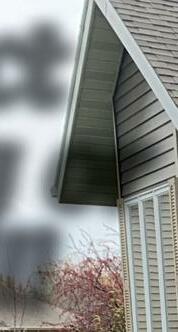






“My kitchen overall is small, so it’s important to utilize all the space you can,” she said.


Her existing island had wheels on it and she was used to being able to move it around for parties, so that was a choice that stuck with the remodel, though she went much larger and the island now serves as the family’s main eating area.

“I feel like I’m a fairly simple person, so my biggest goal was just to get it updated,” she said.


However, as she learned about all the options and upgrades available for today’s kitchen, she chose to incorporate a few into her space. Her kitchen now features a number of drawers instead of stationary shelves, allowing her to easily pull out the drawer to get what she needs rather than searching underneath a shelf. Many of her
cabinets, including the one above the refrigerator, have dividers in them, allowing for better organization.
She added a built-in bookshelf to complement the cabinetry, as well as a tack board for displaying Christmas cards and photos. They updated the backsplash, and now have new countertops, a new sink, new light fixtures and under-cabinet lighting.
“With the island, we have so much more room” she said. “We utilized both sides of it.”

The family gathers around the island at least twice a week for a homecooked meal with teens who are constantly on the go. Trudi enjoys making tater tot hotdish and pork chop dinners. Winter is reserved for baking.
During the summer months, the family does a fair amount of entertaining,

“I feel like I’m a fairly simple person, so my biggest goal was just to get it updated.”





- Trudi Hoppe
grilling and fish fries. They like to do big breakfasts year-round.
In Business Since 1996
afford to finally do renovations that are much needed, it’s so much more modern and enjoyable.” Moritz Septic Service Septic Pumping 1.320.766.0276 Osakis, MN 56360



Owner “Where the Royal Flush is better than a Full House” Moritz Service MN 56360

“Where the Flush is better than a Full House”

Every home has windows, and taking proper care of them is more than worthwhile. Joe Kostreba is a Sauk Centre contractor who has been in the business for nearly 30 years.




“We have the most difficult climate in the country for windows,” Kostreba said.

In 2022, the availability of new windows is limited,
BY DIANE LEUKAM | STAFF WRITER
with many companies out anywhere from four months to a year on orders, according to Kostreba. Now is the perfect time to fix the windows you already have! Here are a few of Kostreba’s tips for keeping your windows in their best condition:

• Manage the moisture: Keeping moisture off windows is the most important element of window care. If







humidity levels reach 3035%, frost will develop on the glass. If humidity is too low, there will be static in the room.

• Keep the air moving: Windows need air movement, so keeping blinds open can help if excess humidity is a problem; using a box or oscillating fan is also an option to provide air flow against the glass. Ceiling fans also work great to keep air moving.

• Maintain your wooden windows: Staying on top of maintenance will prolong the life of your windows. To touch up your windows after the finish begins to peel, the following steps will get them looking good again:

1. Lightly sand affected areas


2. Apply a matched stain to sanded areas (most suppliers can match a stain to your windows)









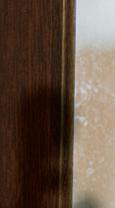

3. Follow with a fresh
coat of lacquer or polyurethane finish. Kostreba says both types work well and it is simply a matter of user preference. Lightly sanding and applying fresh coat to complete window will extend window life.


4. Replace plastic seals if your brand of window has the availability to do so

5. If black rot develops on a window, sand out if possible; otherwise, consider replacing the window


6. Lubricate locks and hinges with a light machine oil to prevent rust
7. Avoid using harsh chemicals when cleaning windows.Straight water, squeegee, isopropyl alcohol, and the typical window cleaners are the best products to clean your glass. Finally, proper window care can save thousands of dollars in any home budget. Try these tips today!























































































































